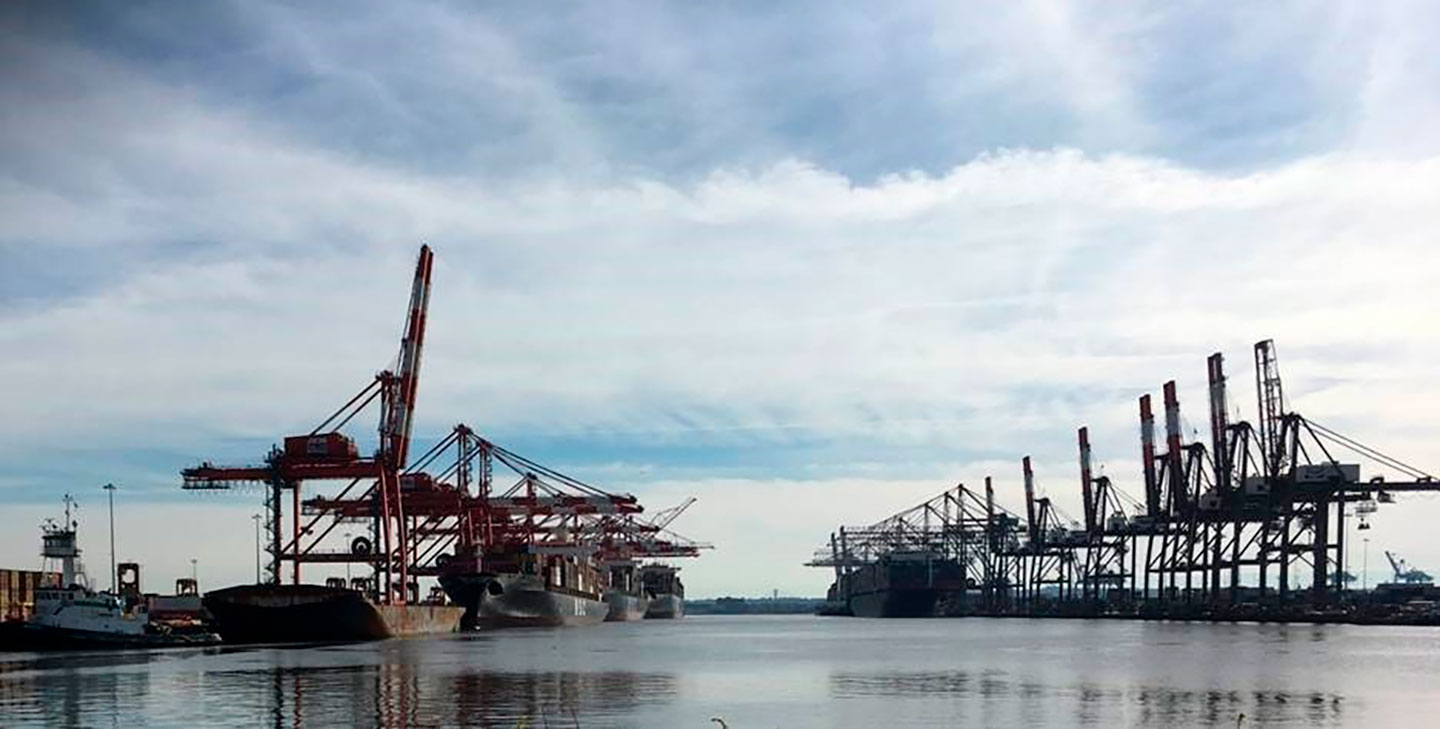The port and intermodal industry is essential for trade, commerce, and the economy. The saying goes, “if you’ve seen one port, you’ve seen one port.” Although most port terminals interchange with vessels, trucks, and trains, how
this interaction is accomplished can be very different from terminal to terminal. Every port has unique operations and wharf design requirements can vary for each type of activity. There is a growing need for expertise in design, operations, and the
engineering behind wharves and ports as we face aging infrastructure and larger vessels that create greater pressure on capacity and existing infrastructure, which are compounded by environmental factors.
What is a Wharf and What Goes into Wharf Design?
Simply put a wharf is where ships dock, land, and load cargo. Although there are numerous design approaches, typically a wharf is either constructed on land with a bulkhead directly along the water or, more commonly, a pile-supported platform structure
over the water, contiguous to the adjacent land. Port design requires the use of both the planning and engineering sides of our brains. In planning, we look at the wharf as part of an overall system and determine financial and operational requirements
that feed into the engineering design. We consider things like useful life, the type of operations at the terminal and cargo to be handled, the size of the vessels to be serviced, equipment needs, and cargo throughput requirements on a daily, weekly,
and annual basis.
From the engineering side, we factor two key planning elements into the design of a wharf First, we look at loading—if a vessel is handling heavy cargo the wharf must accommodate the planned cargo loads. If the terminal is handling containerized
cargo the “design vessel” size is key in determining the size and weight of the ship-to-shore cranes, which are situated on the wharf and commonly rest on rails that run parallel to the wharf. These cranes factor into the sizing of the
wharf and selection of the appropriate foundation and structural system. Second, we look at the planned vessel draft, which is the depth of the hull under the waterline. This gives us the required “design depth” or the total depth of the
wharf.
There is a growing need for expertise in design, operations, and the engineering behind wharves and ports as we face aging infrastructure and larger vessels that create greater pressure on capacity and existing infrastructure, which are compounded by environmental factors. ”
Ken Spahn and Wael Youssef

Ship-to-Shore container cranes lined up on the wharves of the Elizabeth Channel at the Port Authority of New York and New Jersey – NJ Marine Terminals. In the last 20 years crane size has increased significantly to keep pace with the growing size of vessels.
Challenges Facing Ports Today
Three of the biggest challenges facing ports today are the increase in vessel size, capital costs, and climate change. We have seen vessels grow beyond what anyone could’ve imagined 20 years ago, which is causing the need for wharf and port
upgrades. These are capital intense operations. Although there are economies of scale for vessel operators to increase the size of their ships, it tends to create financial challenges for ports that often compete regionally for cargo from these vessels.
Larger ships mean deeper channels and vessel berthing areas, and terminal equipment capable of servicing larger ships with a greater volume of containers in narrower operating windows. To justify these improvements, ports must leverage the value of
regional economic benefits of handling cargo through a port. Often direct revenue to ports from cargo activity alone cannot carry the burden of a port’s capital requirements.
Sea level rise combined with the higher frequency of severe storms and associated storm surges will be a significant hazard to ports in the future. As a result, planning for this must be factored into infrastructure that is designed to last 50 years and
beyond. We recently lead the climate change and sea level rise analysis associated with a Wharf Replacement planning effort for the Port Authority of New York and New Jersey to look at the need to rebuild most of the wharves that support the Port
of New York and New Jersey. From this analysis, we were able to demonstrate that climate change will have a major effect on the ultimate design of these wharves into the future.